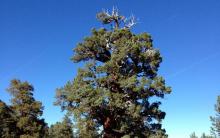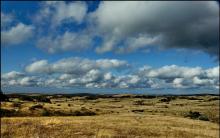Surely, many people know that hard wood is distinguished by such wood species as oak and ash. However, if we talk about the hardest wood, then it is “iron” wood. Moreover, in different countries of the world, different types of trees are classified as “iron”, distinguished by such hard and durable wood, which is often capable of surpassing iron in these indicators. This means that the wood of such trees is very difficult to process, does not float on water and sinks, and can also be used to make nails and even structural elements for cars. So which representatives of the plant world have the well-deserved title of “the hardest tree”?
This hardest tree is present in the forests of Azerbaijan and Iran. In terms of hardness, it is many times stronger than iron. If you want to walk through thickets of such trees, you will very soon realize that this is impossible due to the lack of flexibility of their trunks. Very often, such trees are used to make hedges, which grow stronger and stronger every year.

This is the hardest tree among the “iron” ones and is found in the forests of Northern Ireland and Transcaucasia. The black wood has an unusual structure, is very durable and is resistant to various insect pests. Due to the high density of parrotia wood, it is successfully used for the production of wind musical instruments, machine parts and various artistic crafts. This tree is included in the Red Book.
Tiss

This representative of the “iron” trees not only has super-strong wood, but also does not rot, which is why it received the name “non-iron tree”. Found in Transcaucasia and the Far East. In the past, the wood of the “slender tree” was used to make nails, and it was also used to build structures located under water or underground.
Amazonian and African "iron" trees

In Africa you can find a tree belonging to the “iron” tree - it is called azobe. In Brazil, a similar tree grows - the Amazonian “iron” tree, which is distinguished by its excellent strength and hardness of wood.

This is the hardest tree growing in a protected forest called “Kedrovaya Pad” (Primorsky Territory). The strength exceeds the same parameter of cast iron by 1.5 times. You can even shoot this birch tree with a pistol - the bullet will simply fly off and not damage its trunk. The wood of this tree successfully replaces metal. The rare tree lives for about four hundred years, which is a very impressive life span, because not a single birch tree is distinguished by such longevity.

The wood of this tree, which grows up to 8 meters, was previously used to produce parts for watches, buttons, gun cleaning rods, and parts for weaving machines. And spears or arrows, which were made from dogwood wood, did not wear out.
Ulin
This Bornean “iron” wood is extremely difficult to process due to the high hardness of the wood. Its smooth texture and pleasant color make ulin especially attractive in the production of parquet, solid boards and furniture. You can cut this tree, but you often have to sharpen your tools. But a product made from ulin will last quite a long time.
White acacia

This tree has wood that in our country is considered one of the hardest. Attractive texture, rich color, excellent strength, highest hardness, remarkable resistance to rotting - these are the distinctive features of this wood. In addition, it is very easy to polish. Acacia wood is used for the production of furniture and parquet.

It is also called “Brazilian cherry”, but has nothing to do with the “cherry” genus. The tree with high hardness has a wide crown and grows up to forty meters in length.
The wood of this tree, which grows in Brazil, Venezuela and Colombia, is difficult to work with, but polishes well. Also, sucupira wood is not susceptible to fungi and various pests. Among the trees with durable and hard wood, one can also distinguish ebony, rosewood, and kumara. All these trees sink easily in water and have rot-resistant bark. This means that you won’t be able to make a boat from their wood, but you can make beautiful furniture.











The most beautiful motorcycles in the world
Which sea is the cleanest in the world?
Top 10 Most Expensive Furs
The largest and most luxurious casinos in the world
Knightly orders of Europe XI - XIII centuries